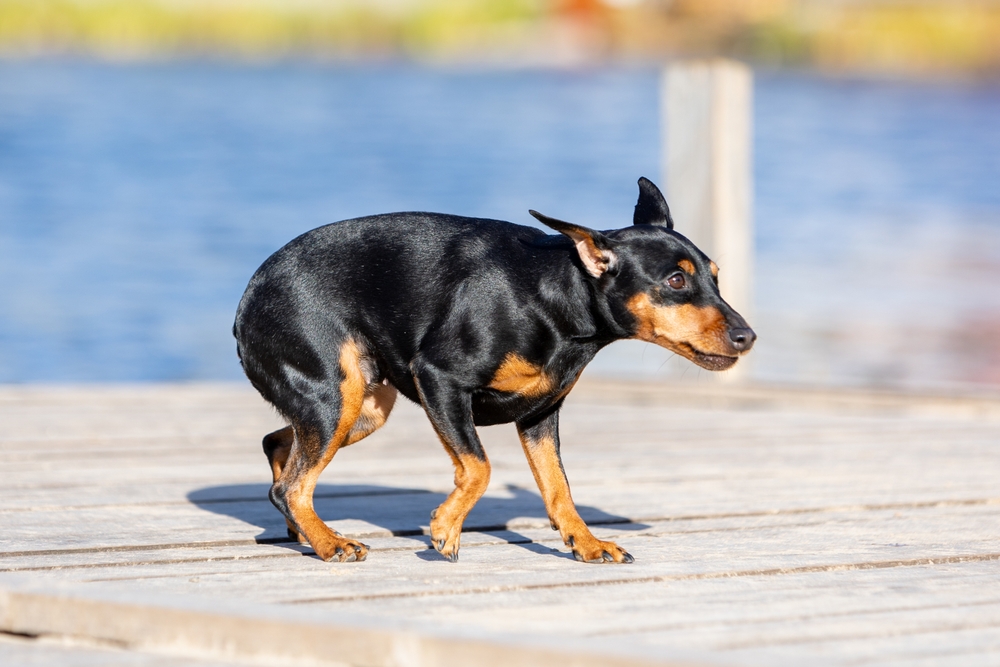
Being terrified of issues is an evolutionary response in not solely people but additionally animals. This concern response is designed to assist defend us in life-or-death conditions. You’ve most likely heard of “battle or flight” with regards to concern and people, however what’s the concern response of canines?
There are 4 concern responses in canines, and should you’re a canine dad or mum, you’ve doubtless seen at the very least one in every of them earlier than. These 4 concern responses embody flight, battle, fidget, and freeze, and each causes a unique response in canine. Right here’s a more in-depth have a look at the 4 concern responses of canine and what it’s best to learn about them to assist your pup develop into much less afraid of individuals, locations, and issues.

What Is a Worry Response?
Regardless that you’ve doubtless heard the phrase “battle or flight” earlier than, you might not know precisely what a concern response is, particularly in canine. A concern response is a response that happens when your pup sees one thing that frightens them (additionally known as a set off). A set off may be something that scares your canine, whether or not that’s one other animal, an individual, a loud noise, a specific sight, or perhaps a scent. Frequent triggers for canines embody folks sporting hats if they’re unfamiliar with them, loud noises corresponding to fireworks or thunders, objects blowing within the wind, and unusual canine.
The 4 Worry Responses in Canine
Listed below are the 4 concern responses in canine, what they imply, and the best way to cope with them.
1. Flight
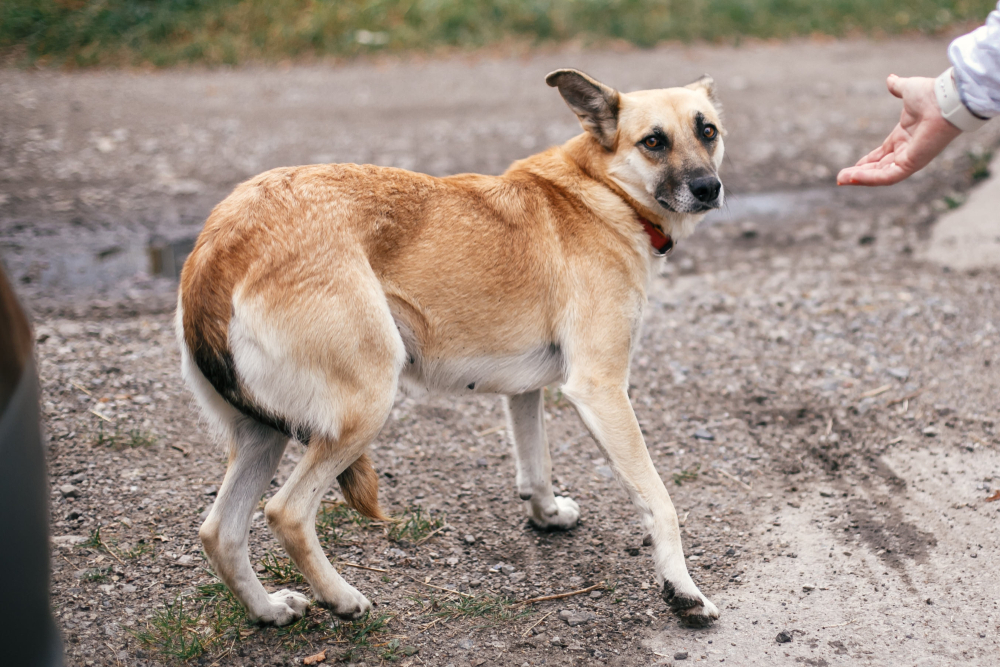
Everybody has heard of “battle or flight,” and that’s what “flight” in canine refers to. If a canine turns into terrified of a state of affairs, then fairly than battle, they might have interaction in flight by making an attempt to take away themselves from the state of affairs. You could have seen your canine do that earlier than when frightened by one other canine or something like fireworks.
If a canine goes to the flight-fear response, they are going to transfer shortly away from the factor or space inflicting their concern. This might be skulking away, working away, or hiding removed from the perceived hazard. Canine engaged within the flight-fear response sometimes present physique language like giant eyes, pinned-back ears, a tucked tail, and a physique posture that’s low to the bottom.
In case your pup is fleeing from something that scares them, allow them to! By no means pressure your canine to work together or keep round no matter they really feel threatened by. This may solely trigger them to develop into extra terrified of no matter it’s. As a substitute, desensitization and counterconditioning needs to be used to assist them develop into extra used to what they deem horrifying and to help them in turning into extra assured and comfy.
2. Struggle
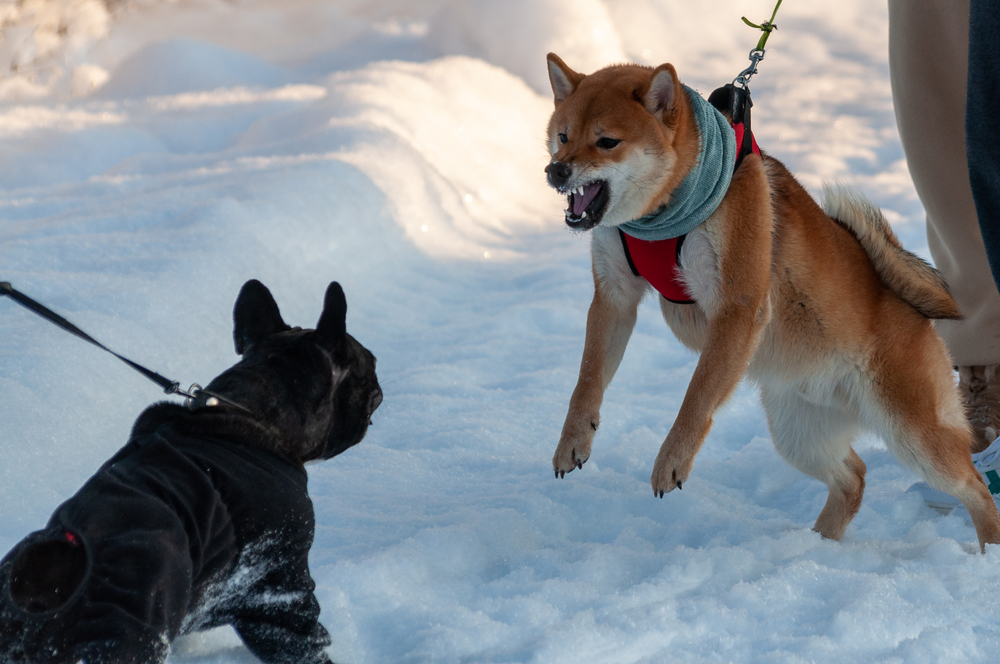
The “battle” concern response is, in fact, the opposite half of the “battle or flight” response. Nonetheless, it’s vital to know that this concern response is usually the final resort for canines. If they’ll make the most of any of the opposite three concern responses to flee the stimulus they’re afraid of, they’ll do this first. That mentioned, generally a canine realizes in solely a matter of seconds that not one of the different responses will work, which leads them to battle as they really feel the necessity to defend themselves.
Take into consideration being on a stroll together with your pup. If they’ve a concern of exceptionally tall males and also you occur to come back throughout one in your stroll together with your canine, your pet is restricted in how they’ll react. Flight is out except they handle to yank the leash out of your hand. Freeze or fidget might not maintain them away from the tall man. That leads them to battle, which might have them reacting by growling, barking, or lunging.
The fight-fear response is a cortisol-triggered response to excessive concern. When working with a canine on their fight-fear response to one thing, by no means use punishment. Keep on with constructive reinforcement to get them to vary how they react to the particular person, place, or factor invoking concern.
3. Fidget
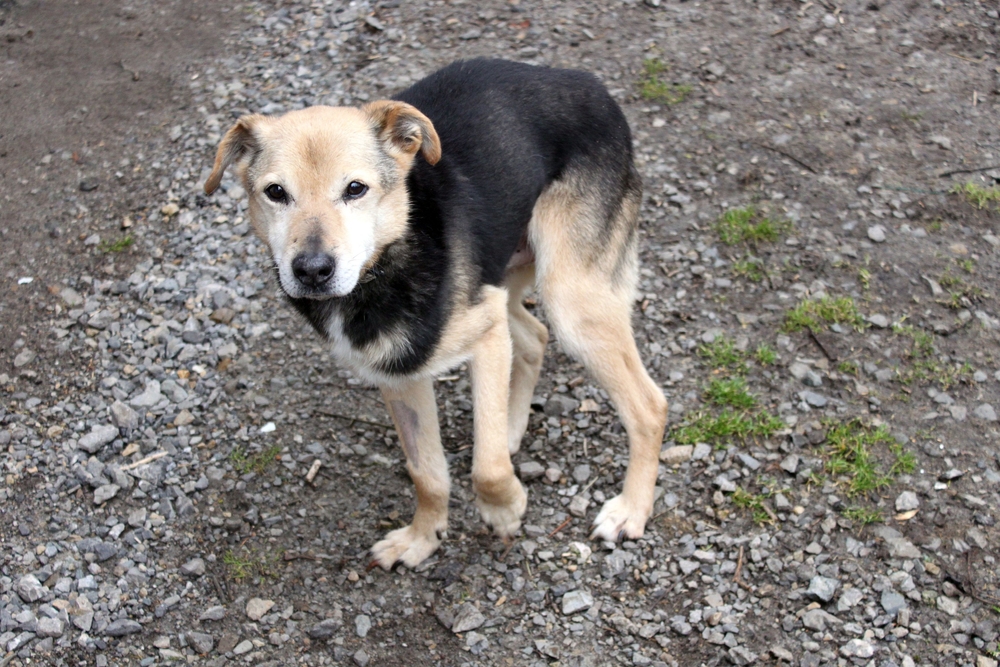
This concern response is much less acknowledged, so you might be unfamiliar with it. However a canine’s “fidget” concern response happens when a canine is making an attempt to deal with the anxiety they’re feeling. These behaviors can also be an effort to keep away from battle or maintain the peace, as nicely.
What behaviors does a canine exhibit when within the fidget concern response? When a pup is on this response, you’ll see nervousness and restlessness. Greater than that, although, you’ll see displacement behaviors, corresponding to whining, pacing, yawning, sniffing, a slight elevate of one of many paws, pinned again ears, lip licking, or extreme scratching.
In case you have a canine who engages within the fidget concern response, it’s important to acknowledge that they’re afraid and uncomfortable and reply with persistence to the behaviors. After that, you’ll be able to work with a canine to get them to be much less afraid of what they concern.
4. Freeze
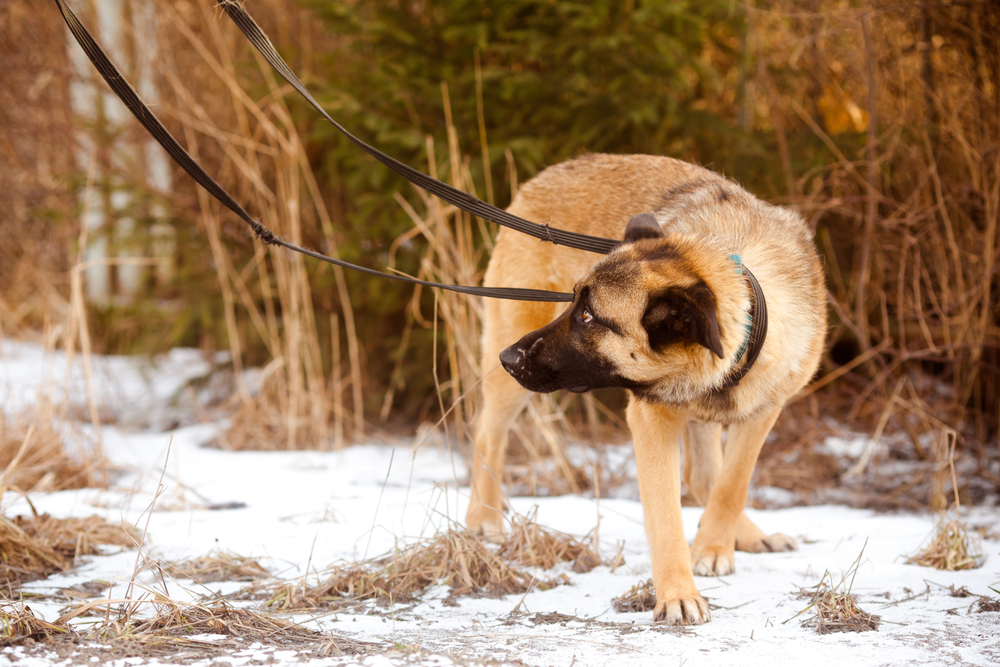
The fourth concern response in canines is “freeze”, which you might be doubtless conversant in. Very similar to in people, this concern response ends in a canine freezing up within the face of the factor they concern. Most frequently, that is executed within the hopes that in the event that they don’t transfer, no matter is horrifying them received’t see them and can transfer previous with out incident.
Nonetheless, a canine can also freeze when they aren’t positive the best way to react or if they’re trapped and may’t have interaction in one other concern response. For instance, if a canine is strolling on a leash and may’t run, fidget, or battle, they might freeze within the hopes no matter is scaring them will go away with out noticing them.
If a canine is in freeze mode, you’ll discover them holding fully nonetheless for a minute as they attempt to decide if one other concern response is best or if the perceived concern is ignoring them, making it secure to maneuver once more. The freeze concern response will even see a canine with their ears pinned again, tightened lips, a scarcity of eye contact, stiffness within the physique, or strolling extra slowly than regular (in the event that they haven’t fully frozen). The freeze concern response can also be a precursor to a different concern response if the canine decides a unique response would see them faring higher.
In case your pup is in freeze mode, it’s best to by no means pressure them to maneuver. Doing this will make them even more afraid of no matter has brought about their concern. As a substitute, attempt to eliminate the factor horrifying them, then present them with consolation.

Mixed Worry Responses
Though canine have solely 4 concern responses, a canine sometimes combines these or modifications from one to a different inside seconds or minutes (corresponding to when a canine in freeze mode decides a unique concern response can be the higher response). So, even when your canine has initially entered the fidget concern response, regulate them as a result of they might have interaction in battle or flight if fidget isn’t serving its objective.
And if a canine’s concern response begins in something aside from “battle,” however the indicators the canine is exhibiting are ignored, they are going to doubtless find yourself in battle mode. Eradicating your canine from the neighborhood of what’s scaring them or eradicating the set off from the world will assist your canine immensely, although. Please remember the fact that when your canine is experiencing concern, a battle response is all the time a risk, your canine would possibly chew or lounge at you if not approached rigorously. How a canine will react when they’re on this mind-set may not be how you’d usually count on them to react so be light however cautious.
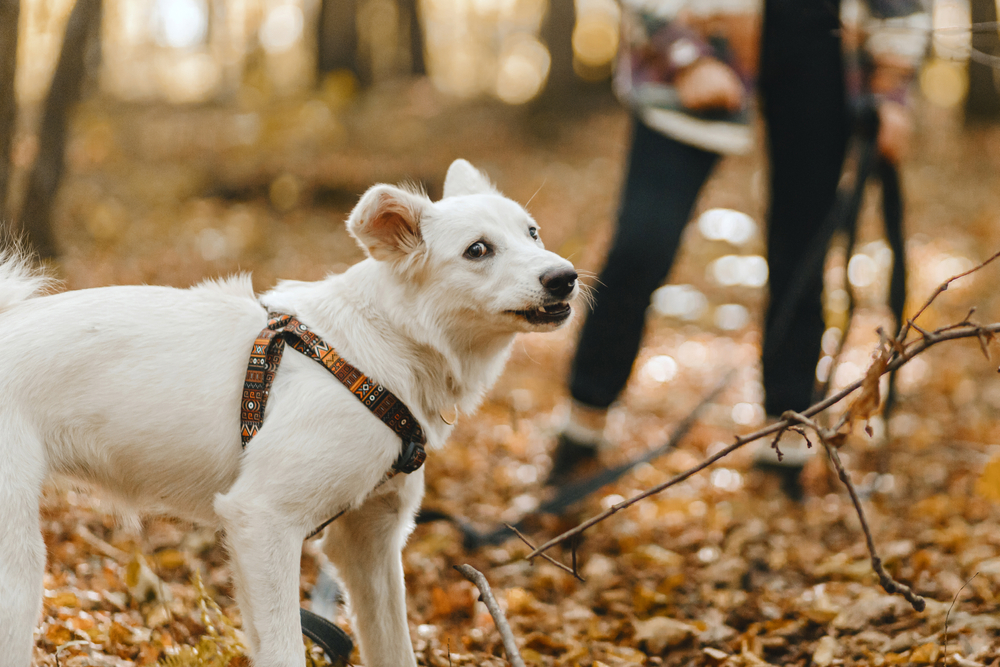

Conclusion
Figuring out the 4 concern responses of canine and recognizing when your canine is exhibiting indicators of one in every of these concern responses is essential. Too many individuals fail to choose up on the indicators {that a} canine is afraid and pressure them to remain in touch longer with the factor they’re fearful of, which solely results in extra concern.
By understanding the indicators of flight, battle, fidget, and freeze, you’ll be higher capable of assist your pup keep calm and really feel secure. You’ll additionally be capable to decide up on the issues they’re scaraed of so you’ll be able to start the method of serving to them develop into much less afraid and extra assured round horrifying stimuli. The top outcome will probably be a happier canine companion!
Featured Picture Credit score: Glikiri, Shutterstock
Trending Merchandise












